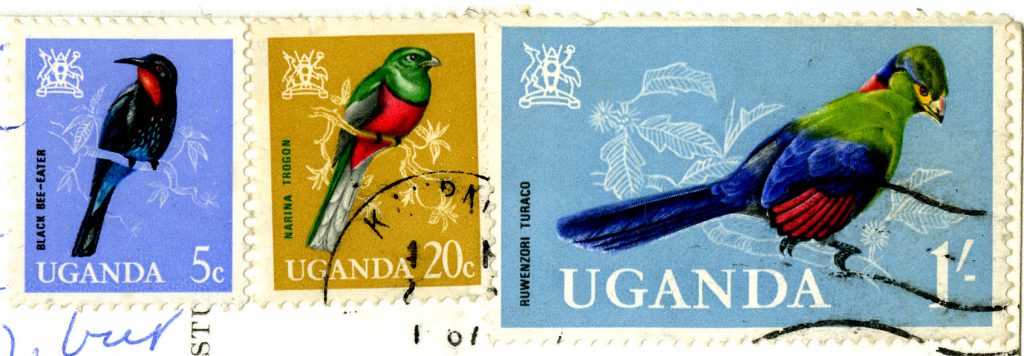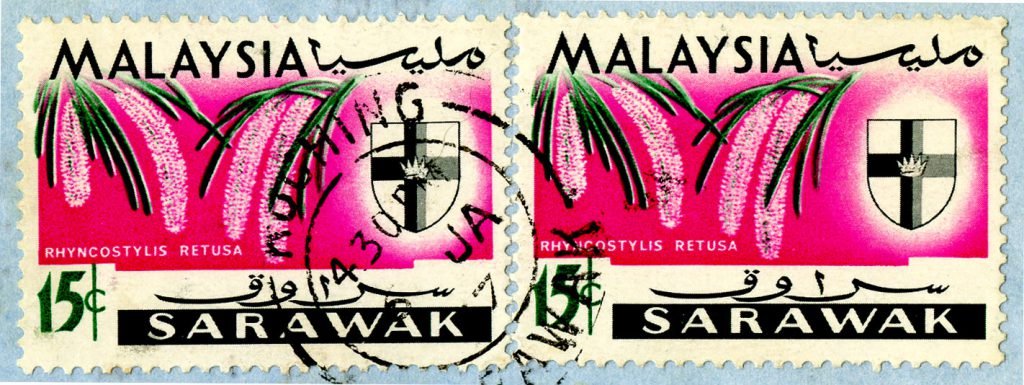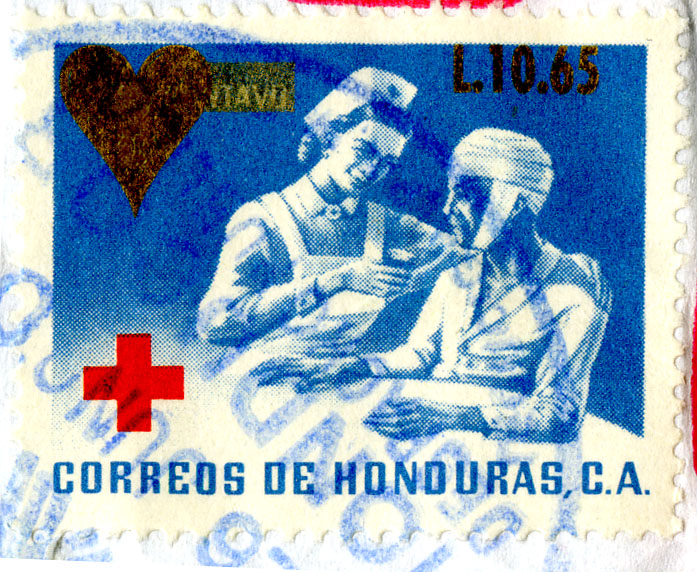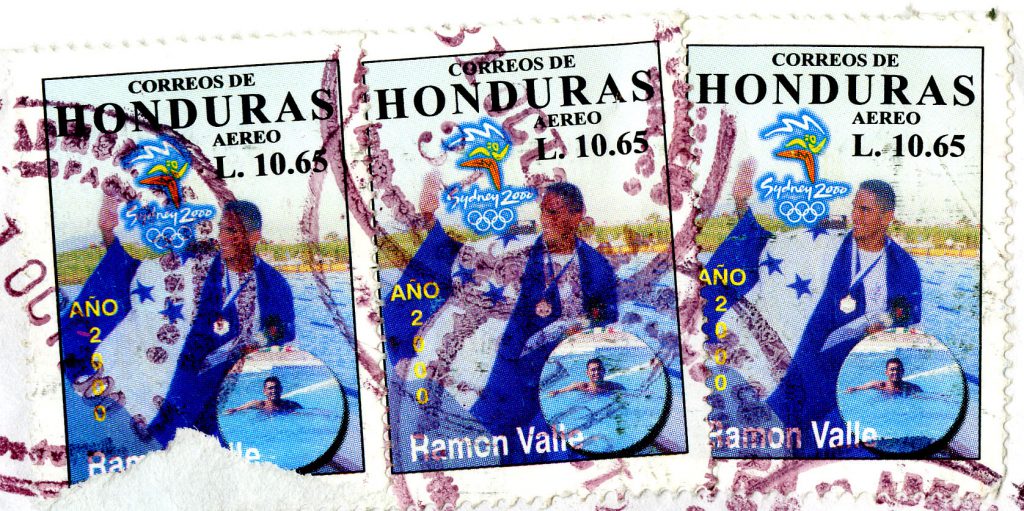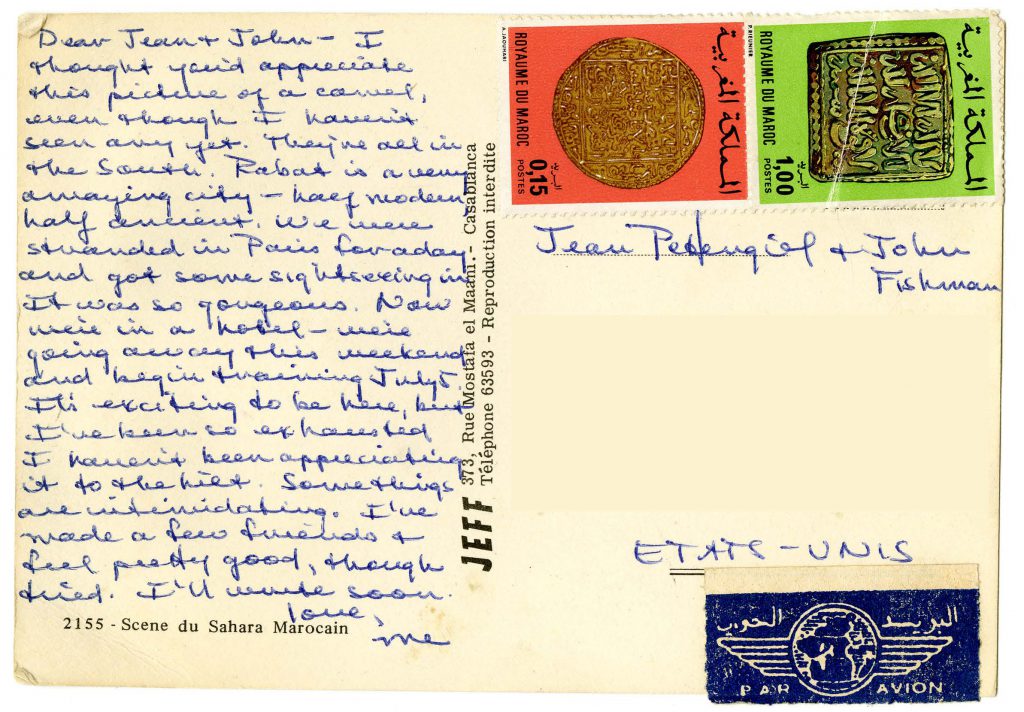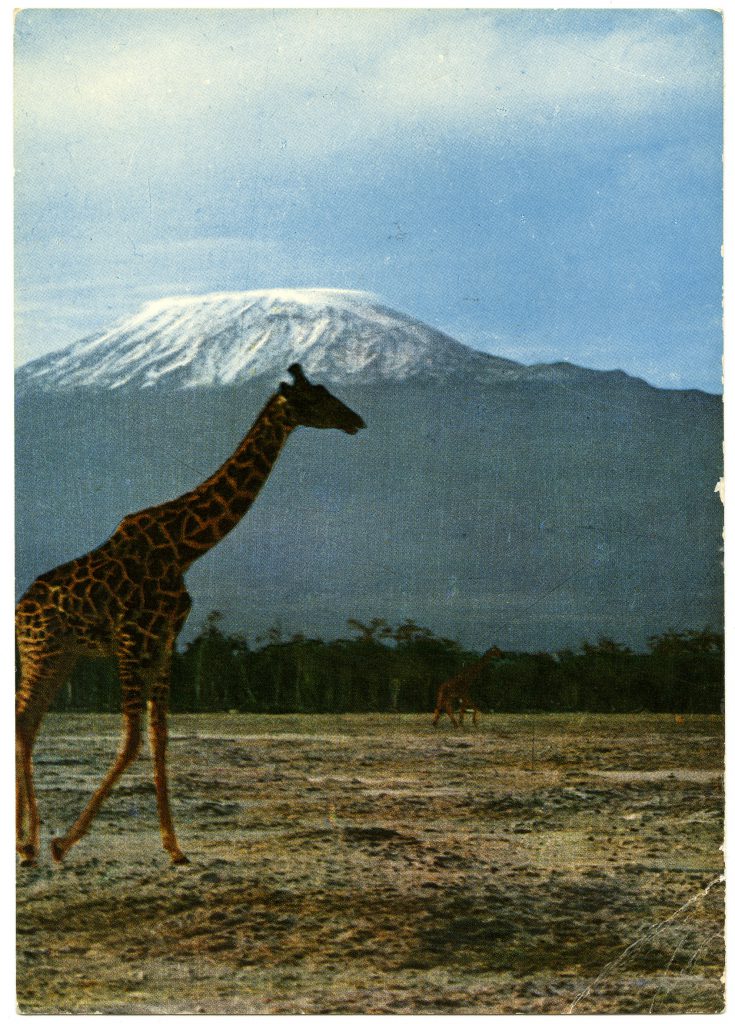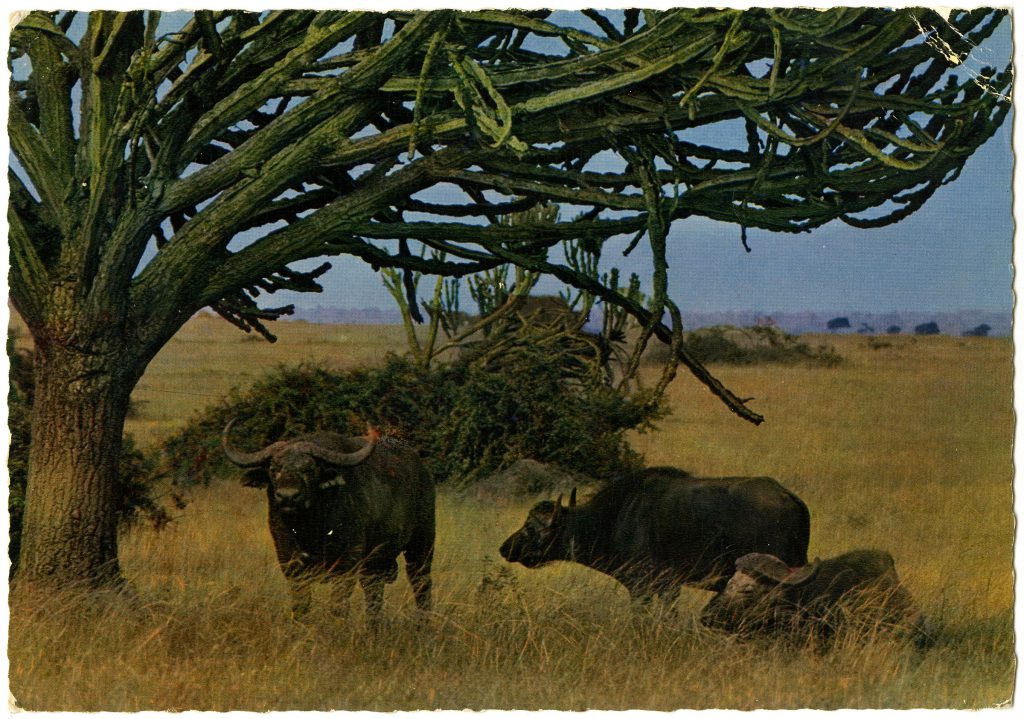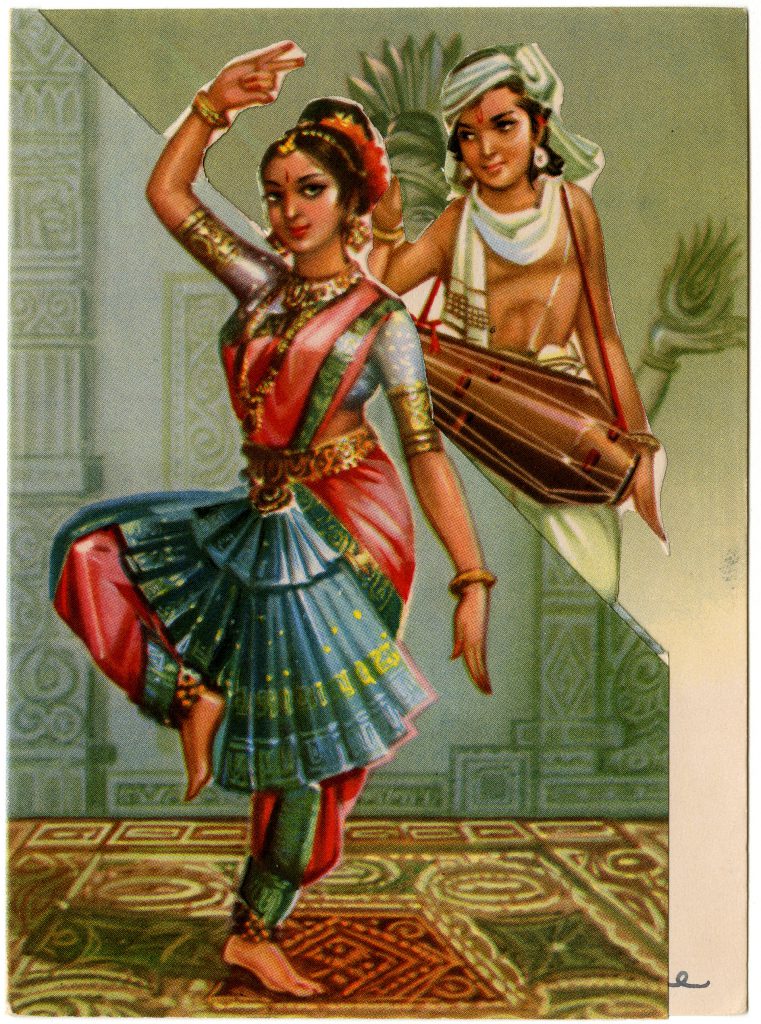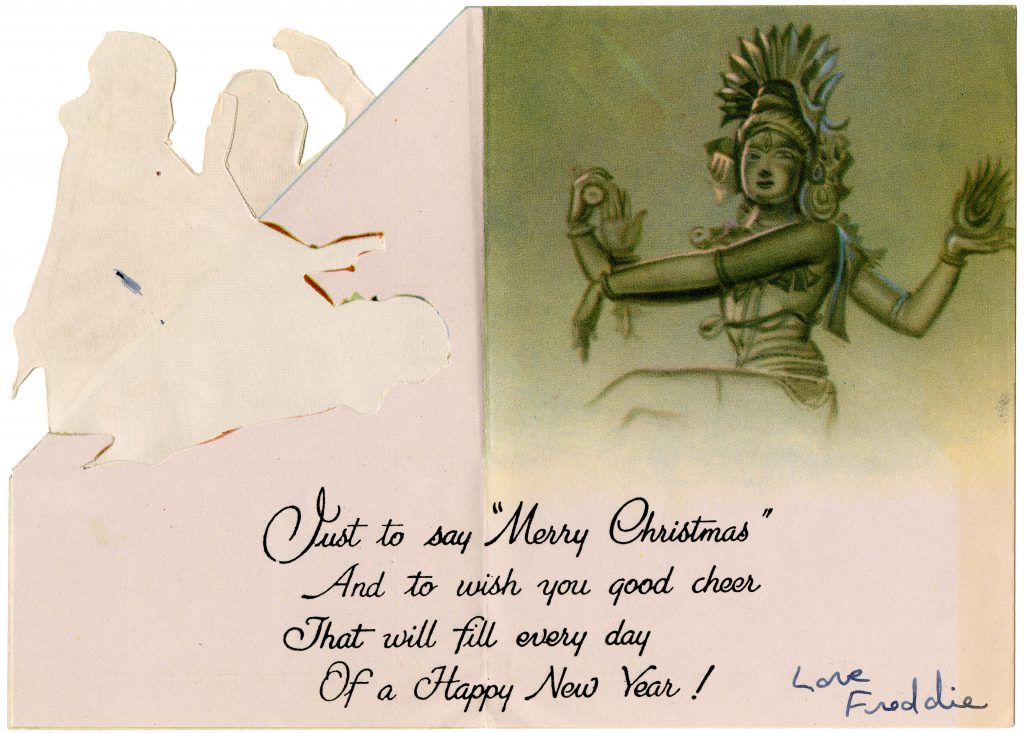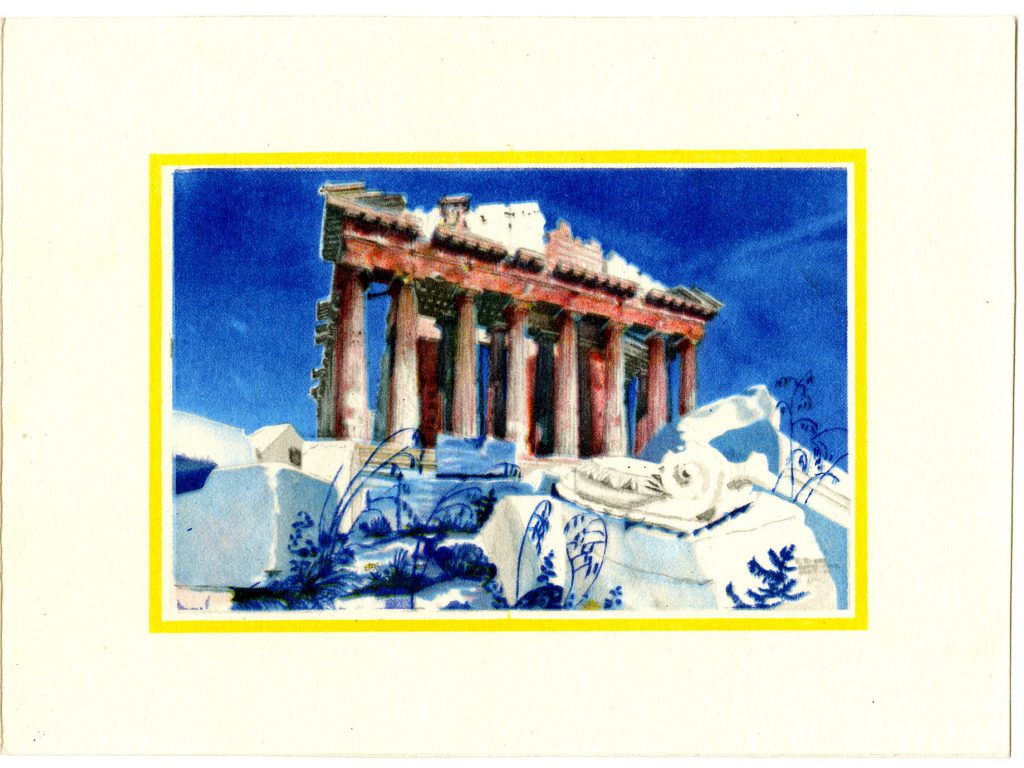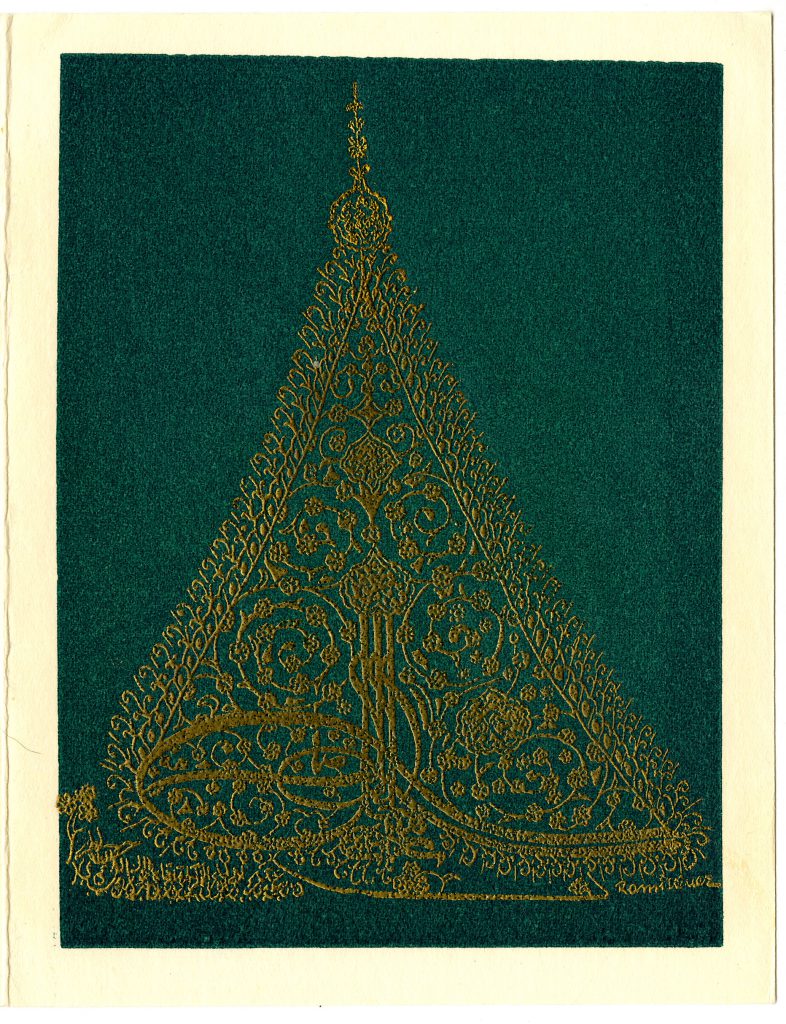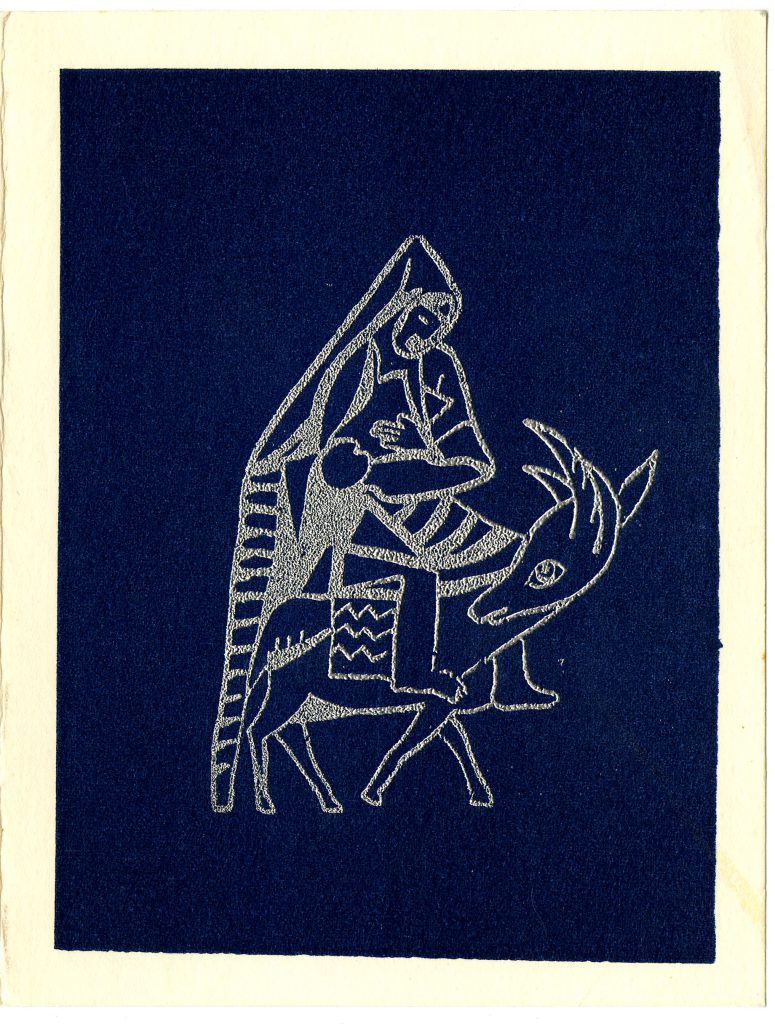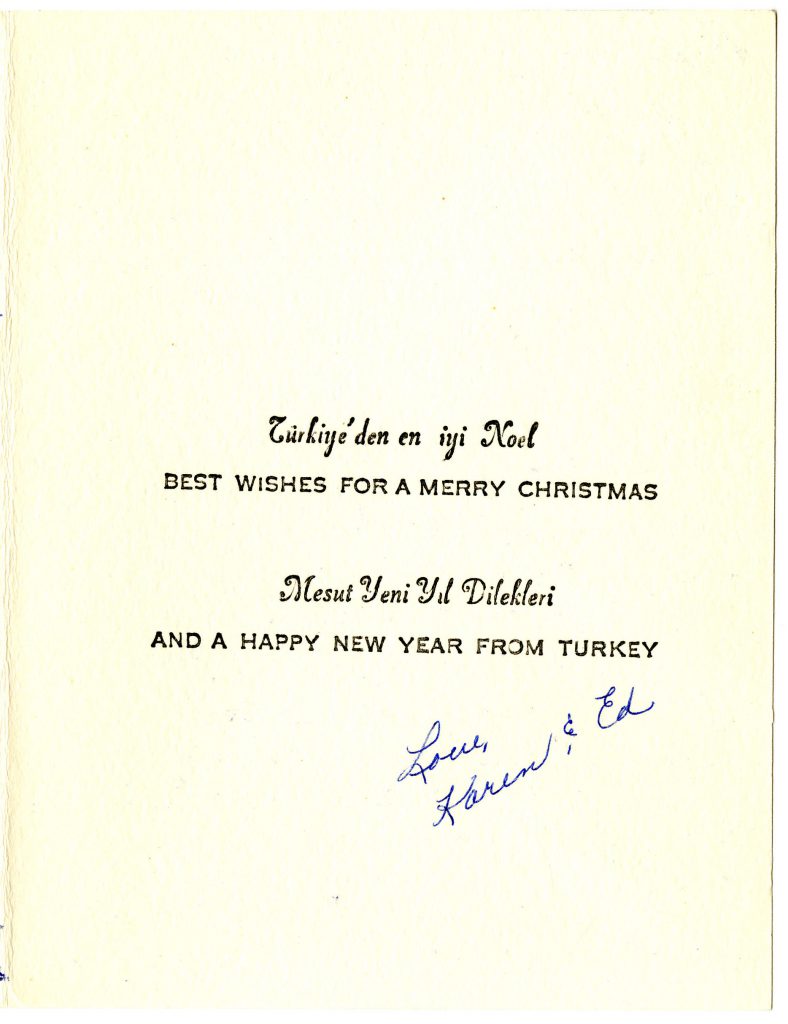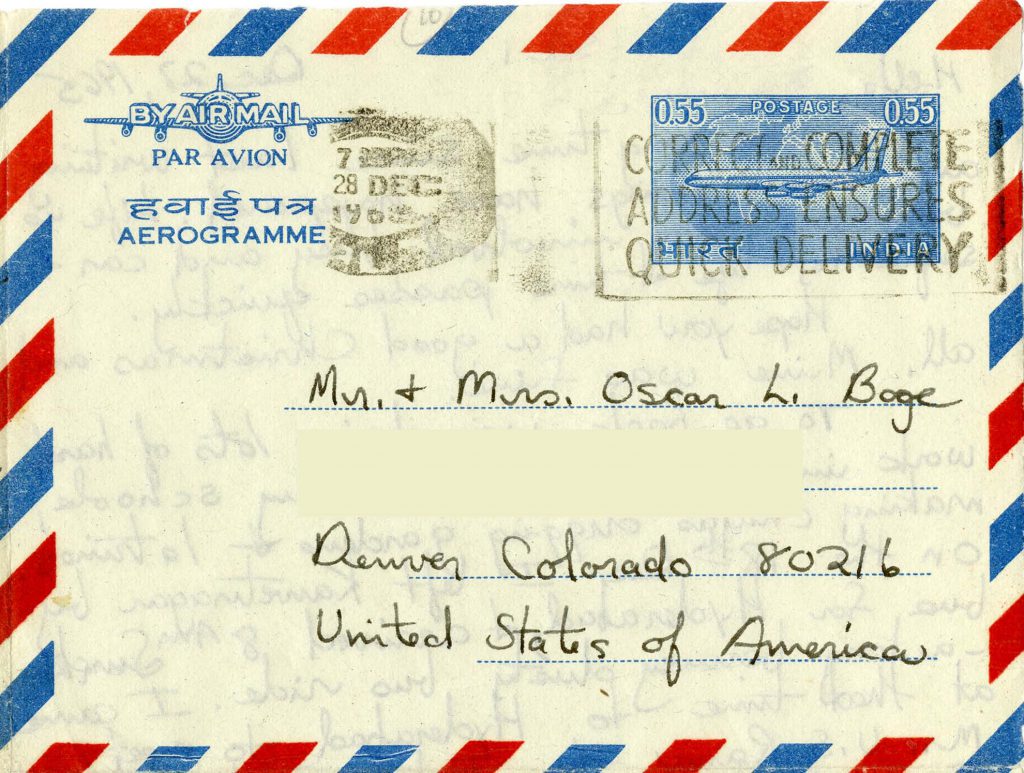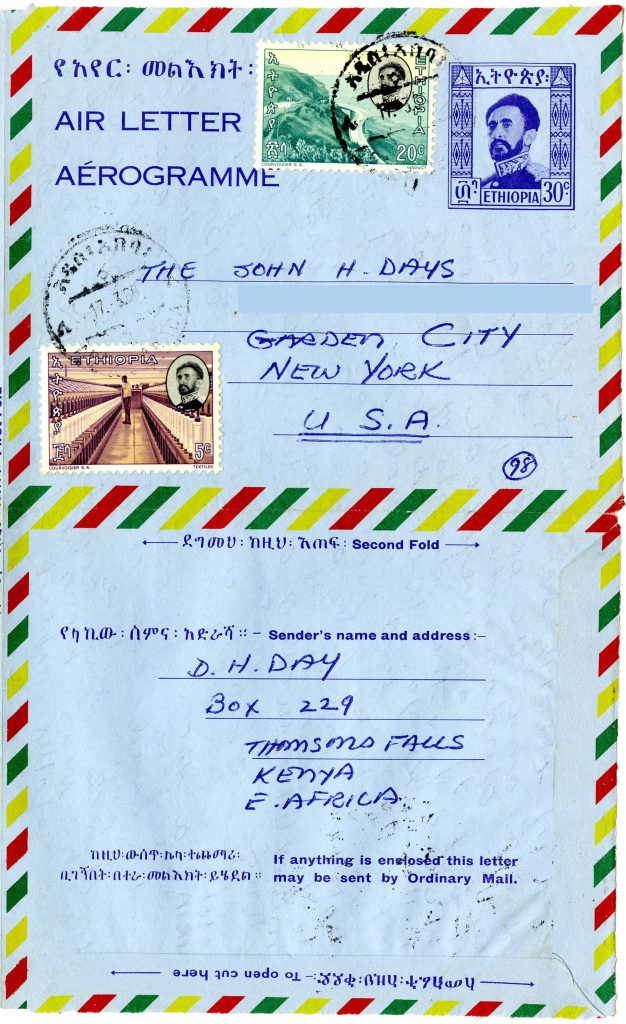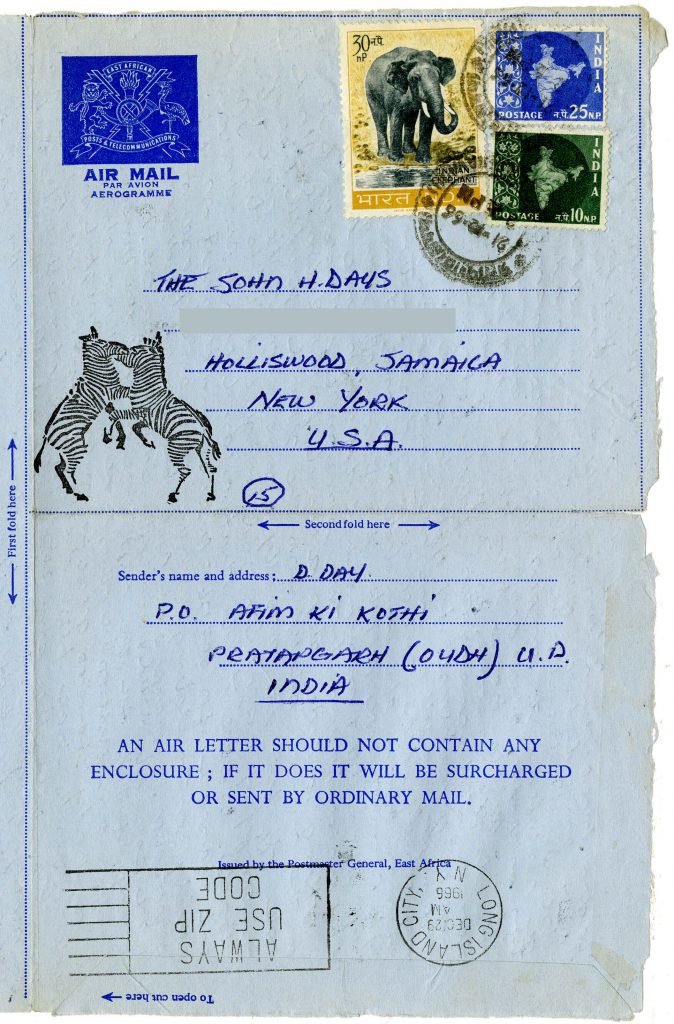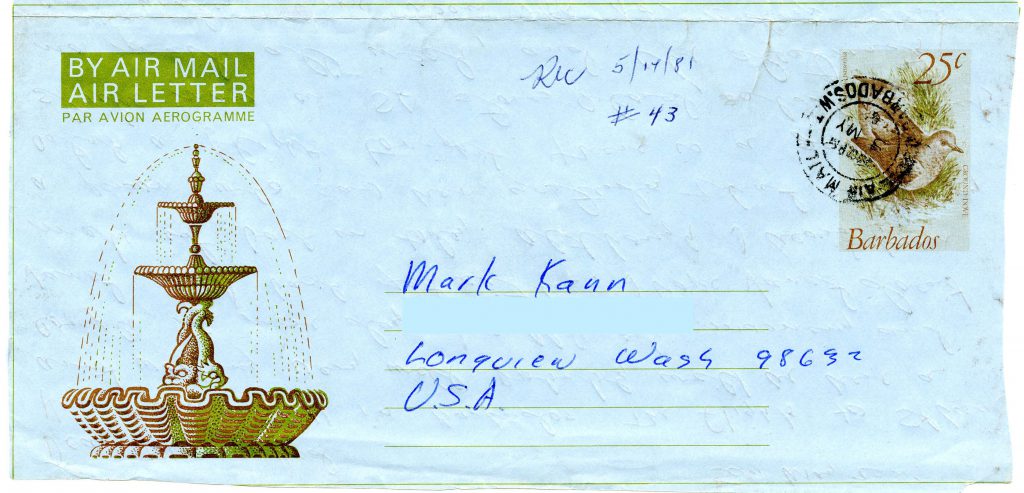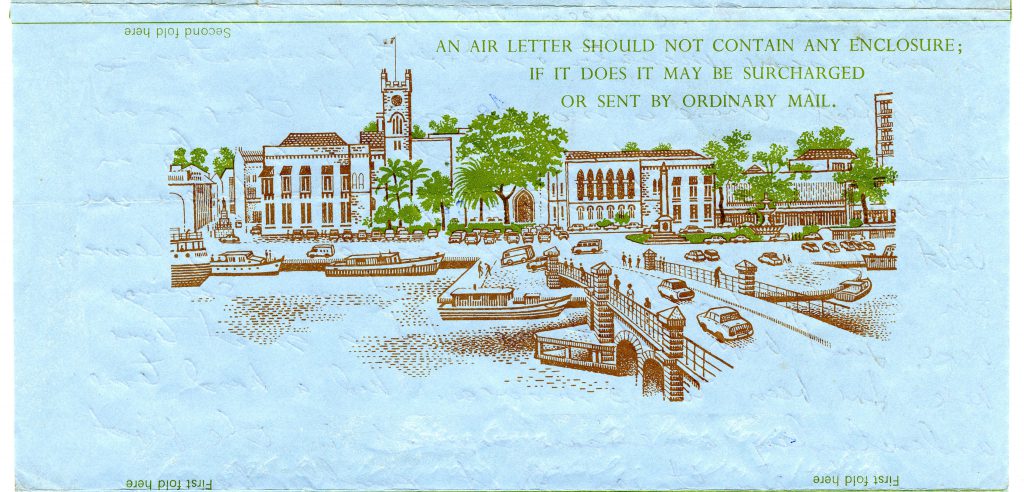Stamps often feature flora, fauna, or an interesting image related to the country or region it’s created for. Also, Peace Corps Volunteers (PCVs) had the lucky chance to live and serve in countries all over the world. As a happy consequence, the two come together when PCVs send their mail home via exciting and new stamps from the countries they served. The Peace Corps Community Archive (PCCA) houses collections of correspondence between PCVs and their family and friends. These correspondences oftentimes include the envelopes each letter was sent in, which means the stamps are often intact. Much can be learned from these stamps, including, illustrations of native inhabitants, local flora and fauna, important technological advances, and much more. Not only do these stamps help carry connections back home for PCVs, but the stamps also share an insight into the exciting communities they served.
Charlotte Daigle-Berney served in Uganda from 1966-1968. On a postcard dated February 1967, she included these three stamps, which feature the local fauna of Uganda. The set of these stamps were released on October 9th, 1965. The stamps feature, from left to right, the Black Bee-Eater, the Narina Trogon, and the Ruwenzori Turaco. All three are native species to Uganda and represent the environmental climate of the country. These stamps offer insight into the vibrant fauna of the country in order to excite both visitors and locals to the nature around them.
In addition, Albert and Anne Briggs served in Malaysia from 1964-1966. Anne wrote a letter to her parents on January 5, 1967 and included these stamps. The stamp was released on November 15, 1965 and features the local flora of Malaysia, the Rhynchostylis retusa, also called the Foxtail Orchid. Below, it reads the name “Sarawak,” a Malaysian state on the island of Borneo. By “reading” this stamp, one can connect the beautiful flora with a specific location in Malaysia and thereby gather important information about the stamp’s place of origin.
Lastly, Bobbe Seibert served in Honduras in the year 2000. Some of her communication with back home was through email, however, Seibert did send a multitude of letters. The first stamp features a nurse tending to a patient and the words, “Correos de Honduras” or “Post of Honduras.” The stamp celebrates Red Cross nurses and the care they have for their patients. The design for the stamp has gone through numerous designs but this stamp was released in 1999.
Another stamp features Ramón Valle, a Honduran olympian from the 2000 Olympic Games in Sydney, Australia. Valle went to the Olympics in 1996 to represent Honduras in men’s swimming. “Translating” these stamps allows us insight into the perception of Honduras. First, the country values its medical care to those in need. Next, a successful Olympian is a symbol of Honduras and represents their country abroad and at home. Since Valle did not represent Honduras in 2000, but rather, represented the country in 1996, the stamp was possibly produced to encourage the country’s interest and support in the Olympic games. This is supported by the fact the stamp was produced on September 13, 2000 and the Olympic opening ceremony was on September 15, 2000.
All of these stamps share insight into the countries and regions they represent. While some PCVs didn’t notice which stamp they sent their mail home with, other stamp collectors reveal at the significance each stamp offers.
For more information, please visit the Peace Corps Community Archive website. To use the collections or make a donation, please contact the AU Archives at archives [at] american.edu.

